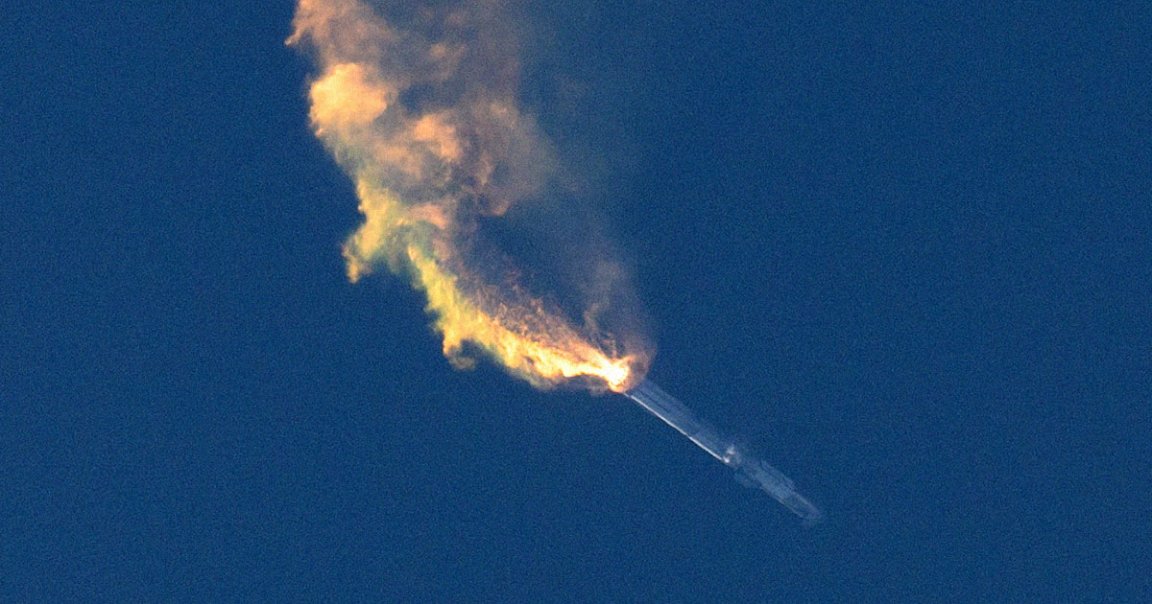
Blowed Up
SpaceX has revealed what caused its gigantic Starship spacecraft prototype to blow up during the company’s inaugural orbital test launch this morning.
In a statement, the Elon Musk-led company confirmed that while the vehicle “cleared the pad and beach” and reached an apogee of just over 24 miles, it subsequently “experienced multiple engines out during the flight test, lost altitude, and began to tumble.”
The company also confirmed earlier suspicions that the spacecraft may have triggered its flight termination system on both booster and ship.
In other words, SpaceX blew up its own Starship and Super Heavy booster four minutes into the flight as a precautionary measure because things weren’t going according to plan. Ah well — there’s always next time.
Paul RUD
SpaceX’s flight termination system (FTS) allows the rocket to virtually tear itself into pieces mid-flight in the event of any deviations from the original flight path in order to ensure the safety of the rocket’s range.
That also means the explosion wasn’t quite a “rapid unscheduled disassembly,” as SpaceX principal integration engineer John Insprucker described it during today’s live stream — and more of a rapid “ordered” disassembly, as Harvard astronomer and space tracker Jonathan McDowell argued .
“Although the Starship flight test was planned as what I call a ‘marginal orbit’ not fully orbital, and not really expected to get that far anyway, I’m assigning today’s flight a regular ‘orbital launch failure’ designation, 2023-F05,” McDowell tweeted .
Rocket Anomaly
It was a powerful event that also caught the attention of federal regulators. The Federal Aviation Administration officially kicked off an investigation following the explosion.
“An anomaly occurred during the ascent and prior to stage separation resulting in a loss of the vehicle,” the FAA said in a statement. “No injuries or public property damage have been reported.”
That means SpaceX will have to go through the FAA first if it wants to get a license to kick off another attempt at getting its Starship orbital.
“This is standard practice for all mishap investigations,” the regulator clarified in its statement.
Despite the setback and subsequent investigation, Musk is keen on getting the next prototype Starship and Super Heavy booster to the launchpad.
In a tweet , he claimed that SpaceX “learned a lot for next test launch in a few months.”
More on the launch: Debris Rains Down on Protected Wildlife After Starship Explosion